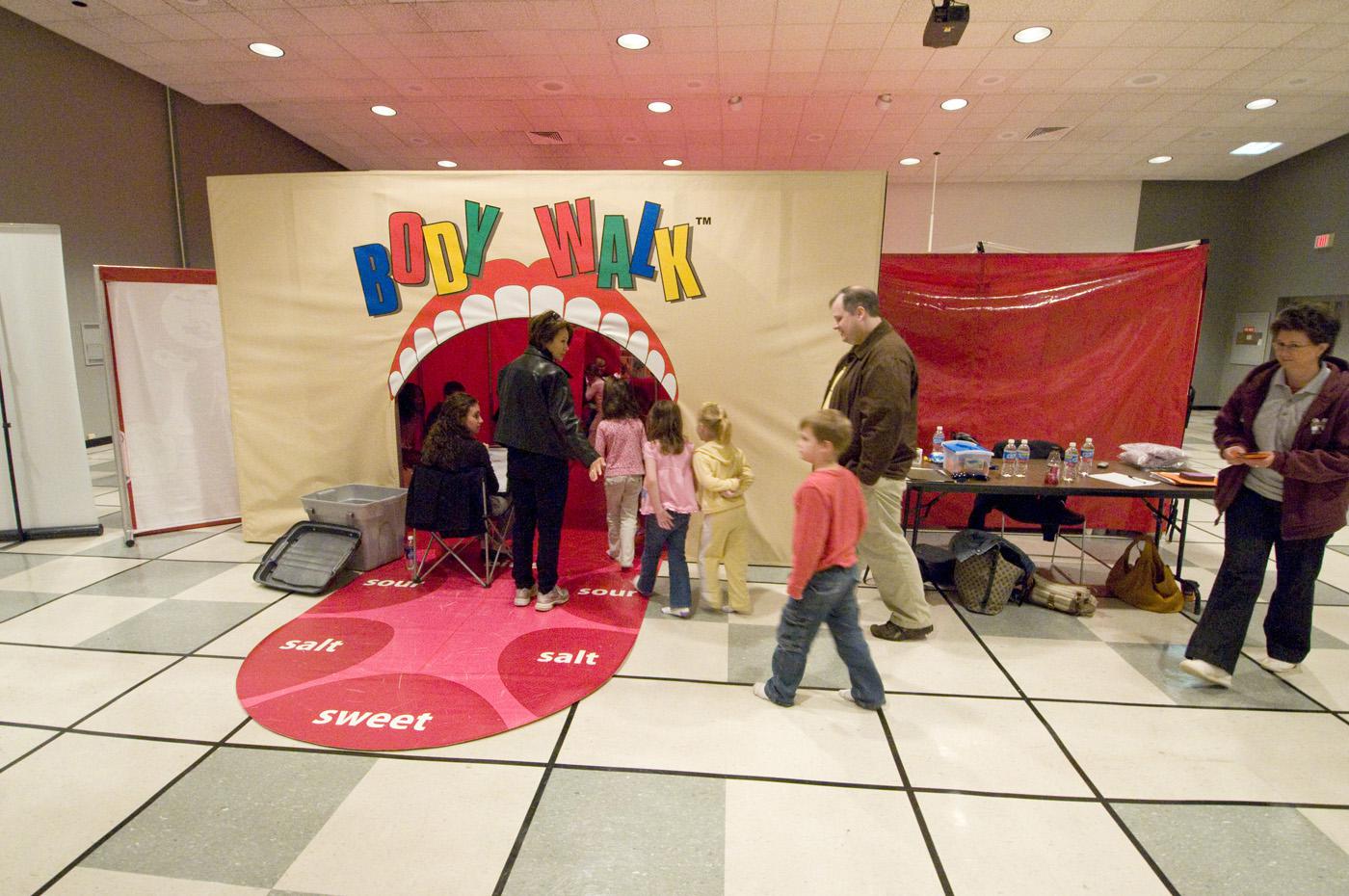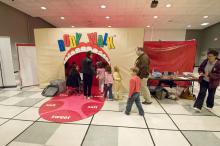Information Possibly Outdated
The information presented on this page was originally released on July 14, 2011. It may not be outdated, but please search our site for more current information. If you plan to quote or reference this information in a publication, please check with the Extension specialist or author before proceeding.
Schools promote healthy choices through Body Walk
MISSISSIPPI STATE – Starting in August, students will again go in the mouth of a model of the human body and explore for 30 minutes as volunteers teach them fun, healthy lessons about their bodies.
“Tens of thousands of school children have learned about their bodies and how to make healthy choices in the first five years we’ve been touring the state with the Body Walk exhibit,” said Katie Bouchillon, Mississippi State University Extension associate and Body Walk coordinator. “Organizers also have learned that it takes lots of planning and good volunteers have a successful experience.”
Body Walk is a free, traveling exhibit of the human body with 10 interactive stations where children learn about the stomach, small intestines, heart, lungs, brain, mouth, bones, skin and muscles. At each station, a volunteer engages students in a five-minute activity focused on making healthy choices.
The exhibit, sponsored by MSU’s Extension Service and Family Nutrition Program, will be returning to Mississippi’s elementary campuses from the last week of August until May. Schools request Body Walk though their county Extension offices.
“During this coming school year, we will be phasing out the U.S. Department of Agriculture’s MyPyramid illustration and changing to its new MyPlate image,” Bouchillon said. “We want students to learn the importance of healthy foods and the risks of poor choices.”
A goal of the exhibit organizers is to make students “smart from the inside out.”
“We want to teach the children that they have the power to make healthy choices for themselves. They can choose water over soda, fruit over candy, and active playing with their friends over sitting to play a video game,” she said. “We teach the benefits of healthy choices.”
Bouchillon said schools and county Extension offices work hard to line up volunteers to provide the information to the students.
“It’s always good to recruit volunteers early and more of them than you think you will need,” she said. “The volunteers are typically parents, teachers or people involved with other Extension programs.”
Some schools have been creative in locating volunteers.
Lynn Todd, a teacher assistant at West Jones Elementary, found herself unexpectedly coordinating Body Walk’s two-day visit to her school.
“We were fortunate to have nursing students from Jones County Junior College to volunteer in the stations on the first day,” Todd said. “We also had a lot of parent volunteers and retired teachers who helped.”
More than 1,000 West Jones students went through the exhibit in two days.
“We had to stay on schedule to get everyone through in time. The process ran very smoothly, and the information held their attention. We were impressed,” Todd said. “We are limited in what we can do for field trips, so it was great the exhibit came right to our school. We’d love for it to go to all the area elementary schools.”
West Wortham Elementary School in Saucier found another creative way to enlist volunteers. One of the teachers contacted the local Walgreens to ask for the staff to help.
Loretta Foster, executive assistant at a Walgreens in Gulfport, said employees from several stores along the Coast took part in the presentations.
“We enjoyed the interaction with the kids and seeing their reaction to the presentations. The exhibit was easy to set up, and we are already talking about doing it again,” she said.
For more information on the Body Walk, contact the county Extension office or go to their website.




